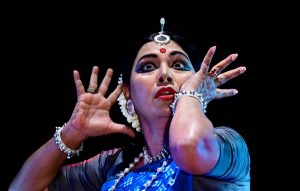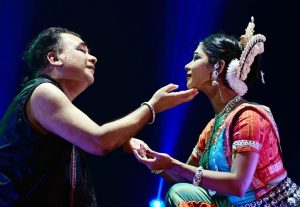Wounded Immortality: The Tale Of Ashwathama

He is blessed to never die, but he is also cursed to live death as an ever-growing wound on his forehead. His life is a line of curse which shall never be stopped. He is to suffer and cry in pain for a life which shall never meet death. He is immortal, but life is a betrayal for him.
The vengeance and the violence make him a man of mean morality. He is Ashwathama, the chivalrous son of Guru Drona. He is a friend to the Kauravas and a dreaded enemy of the Pandavas. All his life, he hates Arjuna because his father (Guru Drona) believes more in the former’s abilities and expertise.
He is jealous, violent, immoral and anguished. He wants to be a warrior but his caste makes him only a trainer or priest. His lust for power pierces his mind like a poisoned arrow. In the great Mahabharata war, he was appointed as commander when all major generals of Kauravas were fallen. In his mindless vengeance and hate for Pandavas, he killed their five infant sons. In Mahabharata, infanticide is treated as the deadliest crime and for that, Ashwathama was punished by Krishna to drag his wounded body up to immortality. He is like Prometheus of Greek mythology, a cursed and immortal man.
More than a decade ago, I developed a script on the tale of Ashwathama from Mahabharata to be enacted as an Odissi dance number. At that time, it was meant for a young student of renowned Odissi maestro Aruna Mohanty. Last week, Ashwathama, the existential crisis of the eternal human being returned to the stage: this time, the maestro as Ashwathama, herself. The tale of Ashwathama was presented by Guru Aruna Mohanty in the “Raja Mahotsaba” organised by Soor Mandir at Saheed Bhavan, Cuttack.
As I developed the storyline and script, I had nothing to comment on the intellectual elements of this choreography. The multi-layered choreographic composition and intense performance of the storyline forced me to underline a few extraordinary outputs of this creative gem. Aruna Mohanty as a soloist carries the feelings of torture, agony, anguish and never-ending pain of Ashwathama to a different plane. In a female body, the contradictory shades of Ashwathama’s life flow like dark masculinity. Never once in her 22 minutes presentation, does she show you the feminine presence of her body. Perhaps this is one of the rare dramatic transformations where the body is metamorphosed as the real character.

The knitting of the intricate footwork with dynamic facial expressions brought out the hearts of the audience. It was dramatic, yet realistic. The musical base for this dance composition is superbly crafted by the veteran Guru Ramahari Das with rhythmic support from Guru Dhaneswar Swain and Guru Bijay Kumar Barik. The musical score was the driving force to make this production a masterpiece.
A jugalbandi of father and daughter
On that very evening, how beautiful it was to see Pritisha Mohapatra, the granddaughter of the legendary Guru Kelucharan Mohapatra dancing with her father, the outstanding choreographer Guru Ratikant Mohapatra. The choreography of “Jatayu Moksha” is a tried and tested one, but it has its own individual impact on every performance. Guru Ratikant has been a part of this choreography for decades. However, his daughter Pritisha joined him on stage as an equal stakeholder in the choreographic presentation. Pritisha is going to be one of the finest future faces of Odissi and that potential one can sense in every move, turn, glance and bend. She has a stunning stage presence and her grace speaks a story by itself.

It was a magical evening in Cuttack to celebrate Raja, the festival of joy and love in Odisha.

Comments are closed.